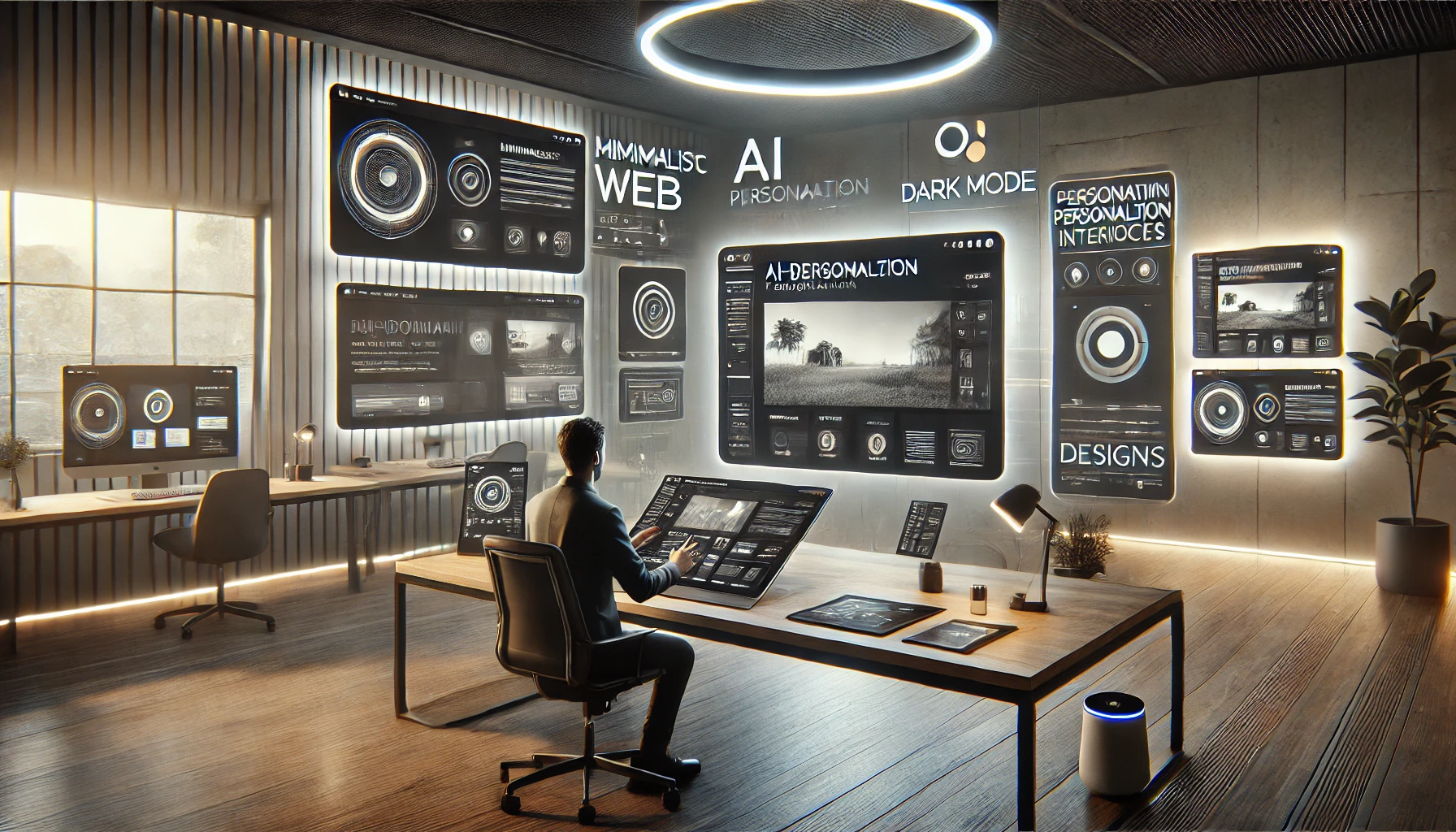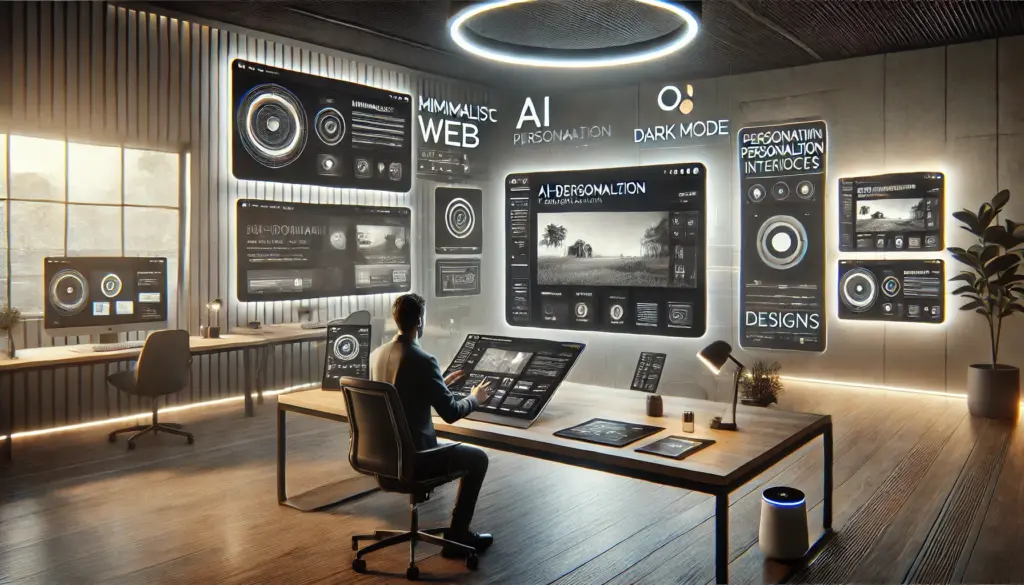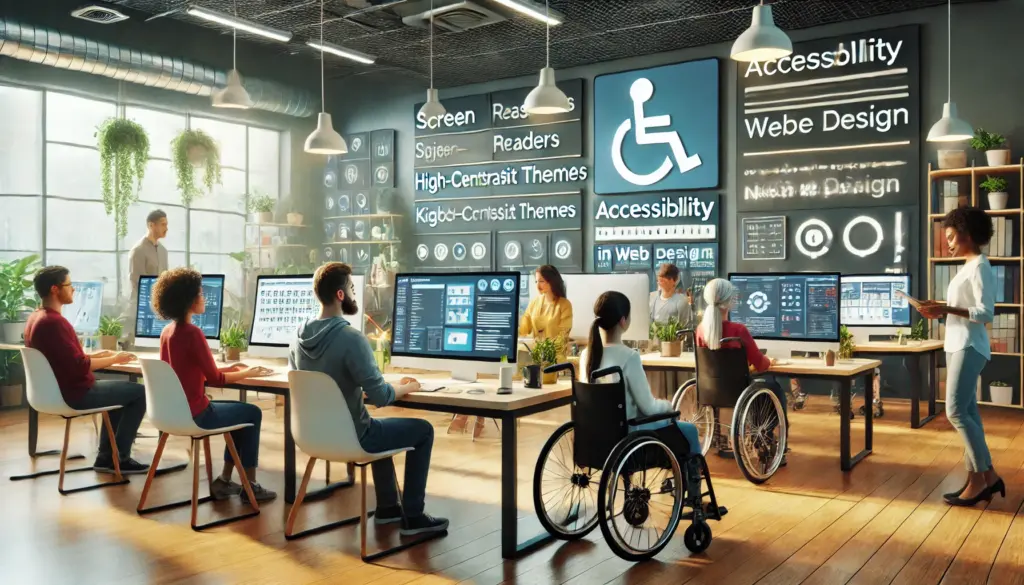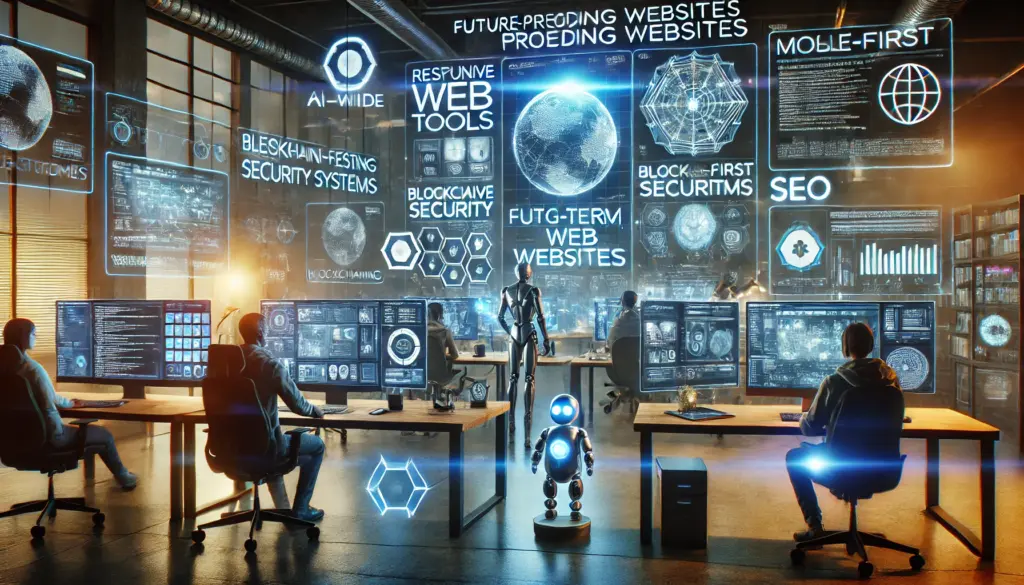Digital Marketing Trends 2025: Strategies to Elevate Your Online Presence
The digital marketing landscape is evolving faster than ever, leaving many brands struggling to keep up. With new tools, platforms, and strategies emerging almost daily, it’s easy to feel overwhelmed—especially when trying to maintain a competitive online presence.
Businesses often find themselves asking: How can we stay relevant? What trends truly matter? The rapid pace of change presents challenges for even the most established brands, but it also offers unparalleled opportunities for those ready to adapt effectively.
If you’ve found yourself pondering these questions, you’re not alone. The sheer pace of innovation in digital marketing can be daunting, but the good news is that these advancements also bring unparalleled opportunities.
From AI-driven personalisation to the rise of new social media platforms, the future of marketing offers exciting possibilities for brands willing to embrace change.
This post will guide you through the most impactful digital marketing trends shaping 2025. Whether you’re looking to leverage artificial intelligence, enhance your multi-channel approach, or take advantage of video marketing’s ever-growing potential, this blog will provide valuable guidance to help you thrive in the digital age.
Let’s explore how your business can not only keep up but stay ahead in this dynamic environment.

The Rise of Artificial Intelligence in Marketing
Artificial intelligence (AI) has emerged as a cornerstone of modern digital marketing strategies, enabling brands to deliver more precise and effective campaigns. For example, Sephora uses AI-powered tools like its Virtual Artist app to offer personalised product recommendations and virtual try-ons, enhancing the customer experience.
From analysing massive datasets to predicting consumer behaviours, AI helps businesses stay competitive in a constantly evolving landscape. Here are some actionable ways AI is transforming marketing strategies:
- Automated Engagement: Tools like chatbots can provide instant, tailored responses to customer inquiries, improving user experience.
- Data Analytics: Platforms like HubSpot offer AI-driven analytics, helping brands identify successful campaigns and areas for improvement.
- Predictive Insights: Predictive analytics tools forecast trends and behaviours, allowing businesses to stay ahead of the curve.
Example: Netflix leverages AI to recommend shows based on user preferences, increasing viewer engagement and retention.
Key Tip: Ethical use of AI is crucial. Transparency in data collection and delivering value-driven personalisation will build consumer trust and loyalty.
Emerging Social Media Platforms and Their Impact
Social media is evolving rapidly, with emerging platforms offering unique opportunities to connect with audiences in new ways. Platforms like TikTok and Instagram have set high benchmarks by captivating global users with engaging content formats.
However, newer entrants like BeReal and Bluesky are carving out niches by promoting authenticity and innovative interactions. BeReal resonates with younger demographics seeking genuine connections, while Bluesky attracts tech-savvy users interested in exploring decentralised social networks.
For marketers, these platforms provide a chance to engage with users who value fresh, creative content and transparent brand interactions.
- BeReal: Focuses on authentic content sharing, attracting younger demographics.
- Bluesky: Has garnered over 28 million users in the USA, appealing to those seeking innovative content-sharing experiences (Lifewire).
- Clapper: Experienced a surge of 2 million users in one week, reflecting users’ readiness to explore TikTok alternatives (Business Insider).
Actionable Steps:
- Experiment with short-form video content that aligns with platform norms.
- Showcase behind-the-scenes moments or user-generated content to foster engagement.
- Monitor metrics like engagement rates and audience demographics to refine strategies.
Data Privacy and Its Influence on Marketing Strategies
In a world where data is king, consumer concerns about privacy are reshaping how brands collect and use information. With regulations like GDPR and CCPA imposing stricter rules, businesses must adopt privacy-first strategies to earn and maintain trust.
By focusing on transparency and ethical practices, marketers can create meaningful connections with their audiences while staying compliant. Here’s how to adapt:
- Prioritise First-Party Data: Collect data directly from customers through surveys or subscription sign-ups.
- Leverage Privacy-Compliant Tools: Use solutions like Google’s Privacy Sandbox for targeted advertising while safeguarding user data.
- Transparency is Key: Clearly communicate how customer data will be used to build trust.
Adopting privacy-first strategies not only ensures compliance but also fosters stronger customer relationships. When consumers trust that their data is handled ethically, they are more likely to remain loyal to your brand.
Additionally, prioritising privacy can lead to higher retention rates, as customers increasingly prefer brands that align with their values and demonstrate responsible practices.
Example: Apple has successfully prioritised user privacy while maintaining effective marketing strategies.
Multichannel Marketing: The Key to Seamless Customer Experiences

Today’s consumers expect consistent and seamless interactions across multiple touchpoints. Whether engaging with a brand online, via mobile apps, or in-store, they demand a unified experience that reflects their preferences and needs.
Multichannel marketing bridges these gaps, ensuring that every interaction feels integrated and customer-centric. Here’s how to create a cohesive customer journey:
- Integrate Experiences: Synchronise online and offline channels (e.g., Starbucks’ app, web, and in-store systems).
- Unify Data: Tools like Salesforce Customer 360 help map comprehensive customer journeys.
- Consistency Matters: Ensure consistent messaging across email, social media, and physical stores.
Pro Tip: Gather customer feedback to refine digital and in-person interactions, increasing loyalty and satisfaction.
Sustainability in Digital Marketing
As environmental awareness grows, consumers increasingly expect brands to adopt sustainable practices. This trend is reshaping marketing strategies, encouraging businesses to reduce their environmental footprint while communicating their efforts transparently.
Incorporating sustainability into digital campaigns not only aligns with consumer values but also strengthens brand loyalty in a competitive market. To integrate eco-friendly practices:
- Reduce Waste: Use targeted email campaigns via platforms like Mailchimp to minimise redundant communication.
- Highlight Initiatives: Share your brand’s sustainable practices through storytelling and transparent reporting.
- Collaborate: Partner with eco-conscious influencers to build authentic connections.
Example: According to Statista, sustainability in marketing is gaining global attention (Statista).
Influencer Marketing in 2025: A Strategic Shift
Influencer marketing has matured into a critical strategy for brands looking to connect with audiences authentically. Unlike the short-term partnerships of the past, 2025 is ushering in an era of long-term collaborations focused on genuine connections and shared values. This shift allows brands to build trust and create content that feels organic and engaging.
The influencer landscape is moving towards long-term collaborations. Here’s how to adapt:
- Focus on Quality: Partner with influencers who genuinely resonate with your audience.
- Track ROI: Use tools like Upfluence to measure campaign outcomes.
- Emphasise Authenticity: Work with influencers who align with your brand values.
Example: Glossier has embraced this shift by building ongoing relationships with micro-influencers.
Leveraging Video Content for Maximum Engagement
Video has become the most powerful tool for storytelling in digital marketing. It captures attention quickly, evokes emotion, and delivers complex messages effectively. Platforms like YouTube, TikTok, and Instagram Reels are ideal for showcasing creative and interactive content that resonates with diverse audiences. Here’s how to maximise impact:
- Create Captivating Content: Capture attention in the first few seconds with compelling storytelling.
- Optimise for Mobile: Tools like Adobe Premiere Rush simplify creating mobile-friendly videos.
- Stay Consistent: Regular posting maintains visibility and relevance.
Example: Nike’s TikTok challenges showcase how to create engaging, viral content.
Personalisation at Scale
Consumers today expect brands to understand their individual preferences and deliver tailored experiences. A recent study by Epsilon found that 80% of consumers are more likely to make a purchase when brands offer personalised experiences.
Personalisation at scale enables businesses to meet these expectations by leveraging advanced tools and data insights. From email marketing campaigns to dynamic website content, personalisation ensures that every interaction feels relevant and meaningful, enhancing customer satisfaction and loyalty.
Personalisation is a must-have for brands in 2025. Here’s how to achieve it:
- Segment Your Audience: Use CRM tools like HubSpot to tailor messaging.
- Dynamic Content: Tools like Optimizely create customised website experiences.
- Be Transparent: Inform customers about data usage to build trust.
Example: Amazon excels by recommending products based on individual user behaviour.
Stay Ahead in the Digital Marketing Revolution

The future of digital marketing lies in adaptability, innovation, and a customer-first approach. By embracing trends like AI-driven personalisation, leveraging emerging social media platforms, and committing to sustainability, your brand can confidently navigate the evolving landscape.
Now is the time to implement these strategies and secure your place as a leader in the digital age. Whether you’re exploring tools to optimise omnichannel marketing or looking for ways to craft impactful video content, the opportunities are limitless. Start small, track your progress, and refine your strategies to create meaningful connections with your audience.
Ready to take your digital marketing to the next level? Explore our tailored solutions designed to help your business thrive in 2025 and beyond. Let’s create a future where your brand isn’t just keeping up but setting the trends.








